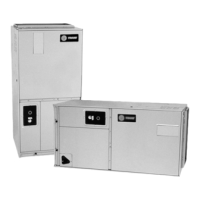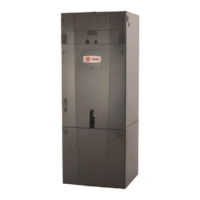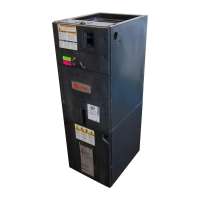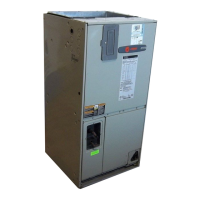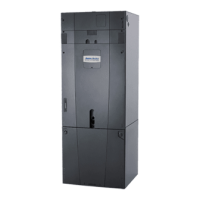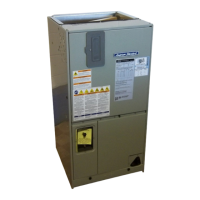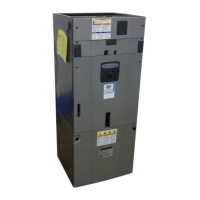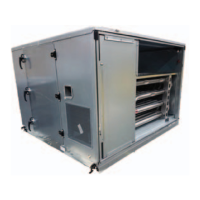Installation
28 RT-SVX35H-EN
beneath this opening, it is recommended that a pitch
pocket be installed. Due to the accessibility of the electrical
entrance, the pitch pocket can be installed after the unit is
placed on the curb.
If a Trane Curb Accessory Kit is not used:
• The ductwork can be attached directly to the factory-
provided flanges around the unit’s supply and return
air openings. Be sure to use flexible duct connections
at the unit.
• For “built-up” curbs supplied by others, gaskets must
be installed around
the curb perimeter flange and the
su
pply and return air opening flanges.
Note: If a “built-up” curb is provided by others, keep in
mind that these commercial rooftop air handler
units do not require a "Pedestal"
Unit Rigging & Placement
Note: Use spreader bars as shown in diagram Figure 10,
p. 29. Refer to Installation Manual or nameplate for
unit weight. Refer to Installation Instructions
located inside control panel for further rigging
information.
1. A
ttach adequate strength lifting slings (cables or
ch
ains) to all four lifting lugs on W_HE casings 2
through 9. The minimum distance between the lifting
hook and the top of the unit should be 7 feet for casings
2 through 9. Figure 10, p. 29 illustrates the installation
of spreader bars to protect the unit and to facilitate a
uniform lift.
2. Test-lift the unit to ensure it is properly rigged and
bala
nced, make any necessary rigging adjustments.
3
. Lift the unit and position it over the curb and pedestal.
(These units have a continuous base rail around the air
handler section which matches the curb.
4. Align the base rail of the air handler with the curb rail
while lowering the unit onto the curb. Make sure that
the gasket on the curb is not damaged while
positioning the unit.
A cross section of the juncture between the unit and the
r
oof curb is shown in Figure 11, p. 29.
WARNING
Heavy Objects!
Ensure that all the lifting equipment used is properly
rated for the weight of the unit being lifted. Each of the
cables (chains or slings), hooks, and shackles used to
lift the unit must be capable of supporting the entire
weight of the unit. Lifting cables (chains or slings) may
not be of the same length. Adjust as necessary for even
unit lift. Other lifting arrangements cou
ld cause
e
quipment or property damage. Failure to follow
instructions above or properly lift unit could result in
unit dropping and possibly crushing operator/
technician which could result in death or serious injury.
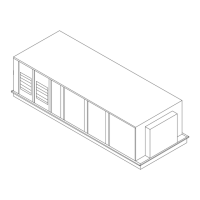
